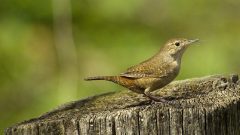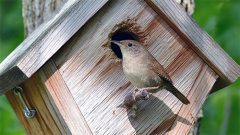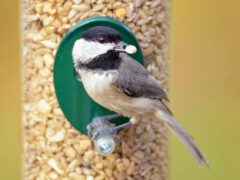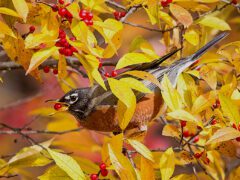The Four Keys to ID
- Size & Shape
Small and compact, with a flat head and fairly long, curved beak. Short-winged, often keeping its longish tail either cocked above the line of the body or slightly drooped.
Relative Size
Smaller than a Carolina Wren; chickadee-sized.

 sparrow-sized or smaller
sparrow-sized or smallerMeasurements
- Both Sexes
- Length: 4.3-5.1 in (11-13 cm)
- Weight: 0.3-0.4 oz (10-12 g)
- Wingspan: 5.9 in (15 cm)
© Andy Witchger / Macaulay Library
- Color Pattern
Subdued brown overall with darker barring on the wings and tail. The pale eyebrow that is characteristic of so many wren species is much fainter in Northern House Wrens.
© Evan Lipton / Macaulay Library - Behavior
Bubbly and energetic, just like their songs. Look for Northern House Wrens hopping quickly through tangles and low branches and, in spring and summer, frequently pausing to deliver cheerful trilling songs.
- Habitat
In summer, Northern House Wrens are at home in open forests, forest edges, and areas with scattered grass and trees. Backyards, farmyards, and city parks are perfect for them. In winter they become more secretive, preferring brushy tangles, thickets, and hedgerows.
© Caleb Scholtens / Macaulay Library
Regional Differences
Ornithologists recognize two Northern House Wren subspecies groups: "Northern" and "Brown-throated." The "Northern" group is the one found across nearly all of the wren's range in the U.S. and Canada, while the "Brown-throated" group stretches from extreme southeastern Arizona to Oaxaca, Mexico. The "Brown-throated" group has a distinct buffy eyebrow and a cinnamon-buff throat and chest.














